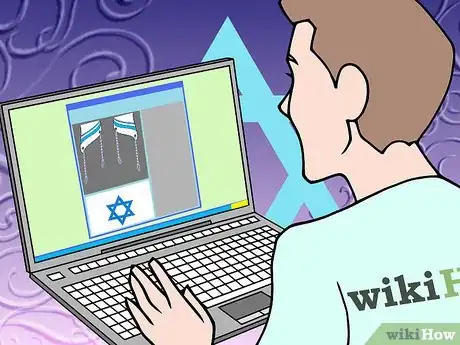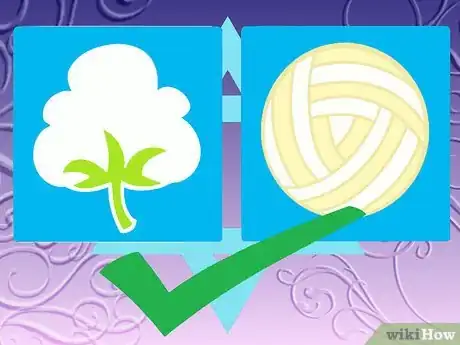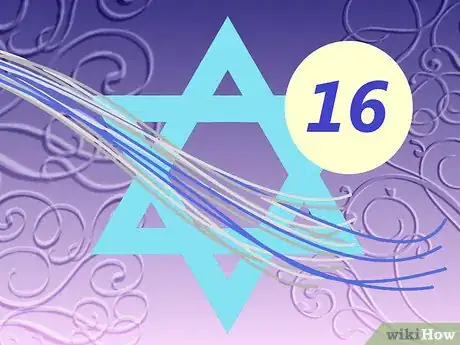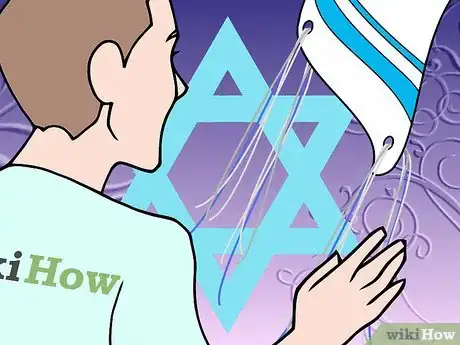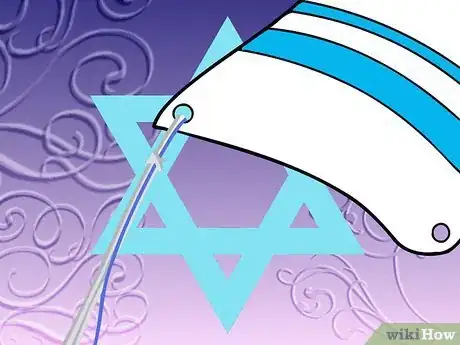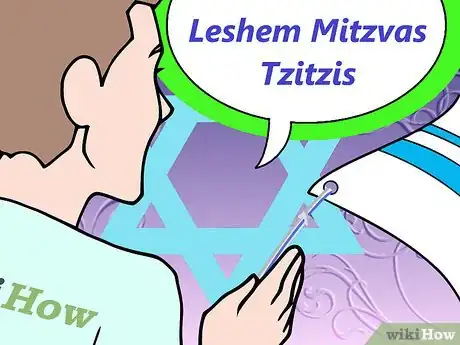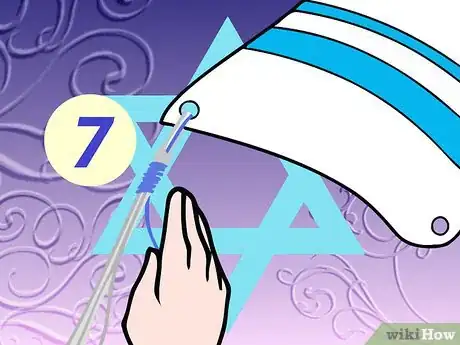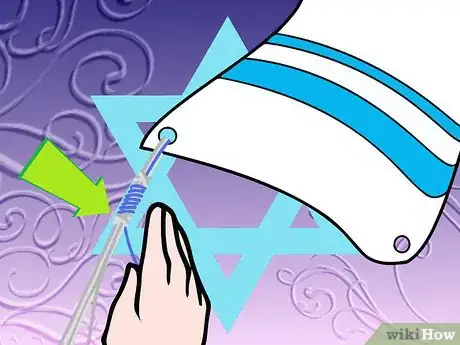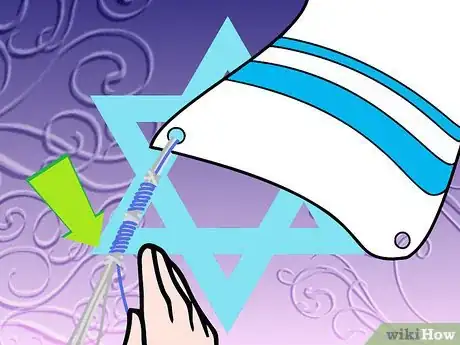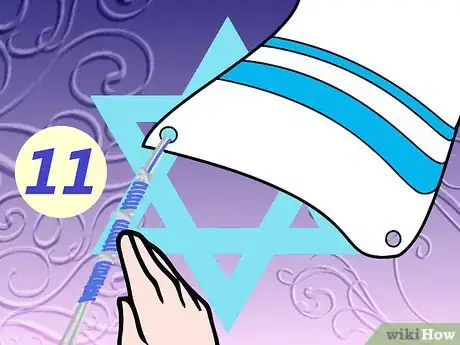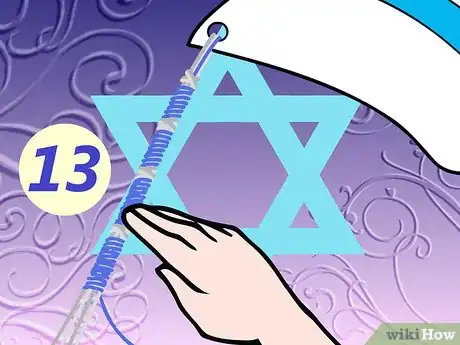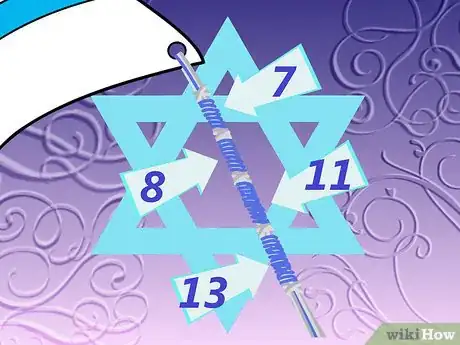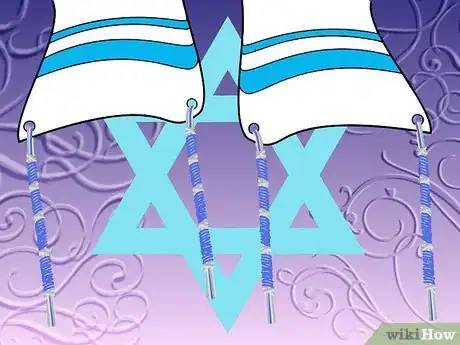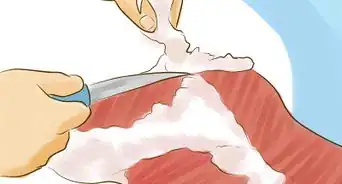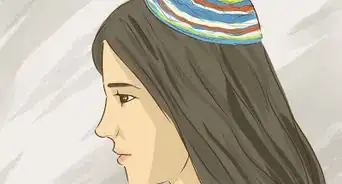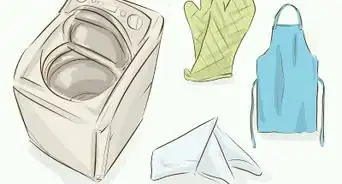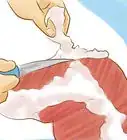wikiHow is a “wiki,” similar to Wikipedia, which means that many of our articles are co-written by multiple authors. To create this article, 18 people, some anonymous, worked to edit and improve it over time.
This article has been viewed 49,037 times.
Learn more...
The Torah requires Tzitzis (Hebrew: "fringes") on any four-cornered garment of a certain minimum size, and this does not include your shirt unless you have a rip up each side almost to your armpit. They're worn by Chasidic and Orthodox Jewish men and boys. Such strings must be tied according to specific configurations. That is, the strings must be made a certain way, and they must be tied and wrapped in a certain way. They must be a minimum of a certain length, and they must be made of a specific number of strings. Even the style and number of knots is mandated to precise requirements.
Steps
-
1Buy or order you tzitzis at a Jewish store or website.
-
2Shatnez is when wool and linen are combined together, so never use linen. The preferable material is wool, but since a tallis katan (Hebrew: "small tallis") is worn all day under their clothes, most people feel uncomfortable wearing it because it makes you hot. Other materials include cotton and polyester blend mesh for those with a lot of perspiration.Advertisement
-
3You should have 16 Strings in total (4 for each corner) included in the 16 strings you will notice 4 strings which are a little longer in size. These 4 strings are known as the "Shamas" strings and will be used to tie around the 3 remaining strings for each corner.
-
4First step is to push three regular strings and one "Shamas" string through a corner of the garment. Does not matter which one you start with. It is halachically imperative that you say: "L'shem Mitzvas Tzitzis" as you insert the strings.
-
5Make sure that they are all equal in length, with the "Shamas" string being a little larger. You should have 7 strings of equal length and one long one.
-
6Separate 4 of the strings and tie a knot twice with the two groups of 4.
-
7As you tie each knot you should say "Leshem Mitzvas Tzitzis" - For the purpose of the commandment of making tzitzis.
-
8Take the "Shamash" string and wrap it around the remaining strings 7 times.
-
9Tie another double knot with 4 each.
-
10Now going further up. Wrap the "Shamas" around the other strings 8 times.
-
11Tie another double knot.
-
12Wrap "Shamas" 11 times.
-
13Tie another double knot.
-
14Wrap the "Shamas" around 13 times.
-
15Tie another double knot.
-
16You should now have one corner of your garment complete. The strings should be hanging loose, with 5 knots and wraps at 7,8,11 and 13.
-
17Repeat all these steps for the remaining corners.
-
18When the garment is fully completed with all strings wrapped an knotted. Dip the knots into boiling water for a few seconds. This will make the knots extra tight and should prevent them from becoming unraveled.
-
19If your knots start to become unraveled, then you must repair them before they completely fall apart.
Community Q&A
-
QuestionHow old does a person have to be to wear a tallit and a kippah?
 Community AnswerSome families have kids wearing tallit at a very young age, and kippahs are also expected from most young Jews. However, tallit are only required to be worn by people who have reached Bar or Bat Mitzvah age. Depending on the community, this means either 12 for girls and 13 for boys, or 13 for both girls and boys. Kippot are more dependent on where you are, but most people are just expected to wear them.
Community AnswerSome families have kids wearing tallit at a very young age, and kippahs are also expected from most young Jews. However, tallit are only required to be worn by people who have reached Bar or Bat Mitzvah age. Depending on the community, this means either 12 for girls and 13 for boys, or 13 for both girls and boys. Kippot are more dependent on where you are, but most people are just expected to wear them. -
QuestionWhat is the significance of using 7, 8, 11, and 13?
 Community AnswerSeven represents the perfection of the physical world, which was created in seven days. Eight is the number of transcendence that goes beyond nature. Eleven is the numerical value of vav-hey, the last two letters of God's Name. Thirteen is the numerical value of echad – one.
Community AnswerSeven represents the perfection of the physical world, which was created in seven days. Eight is the number of transcendence that goes beyond nature. Eleven is the numerical value of vav-hey, the last two letters of God's Name. Thirteen is the numerical value of echad – one. -
QuestionHow long should the strings I start out with be?
 Community AnswerThe short strings should be 40 inches, the long strings should be 60 inches. You may be able to trim it when you're done. If you are knotting, your long strings will need to be longer.
Community AnswerThe short strings should be 40 inches, the long strings should be 60 inches. You may be able to trim it when you're done. If you are knotting, your long strings will need to be longer.
Warnings
- If you purchase very high quality tzitzis, it is a very bad idea to machine wash them and your dry cleaner must be very careful with them if you want to avoid damage.⧼thumbs_response⧽
